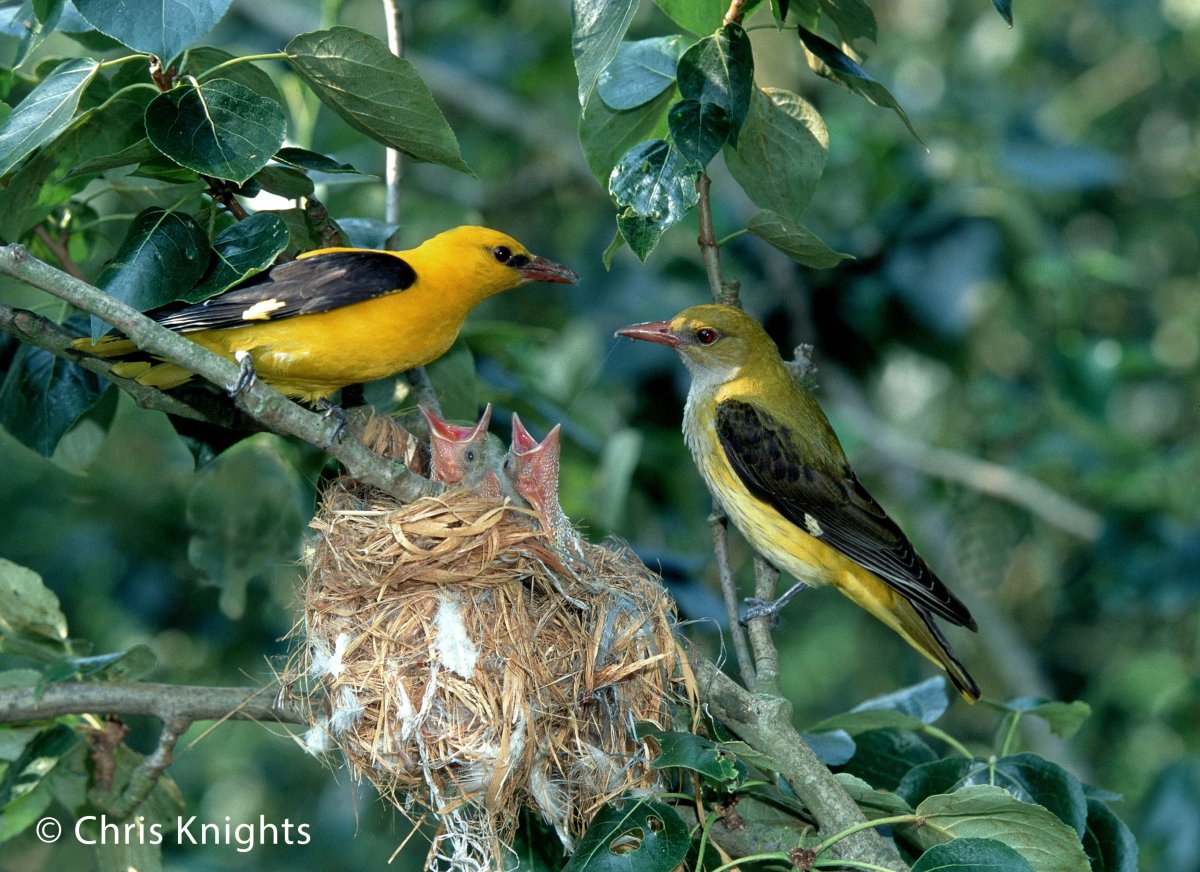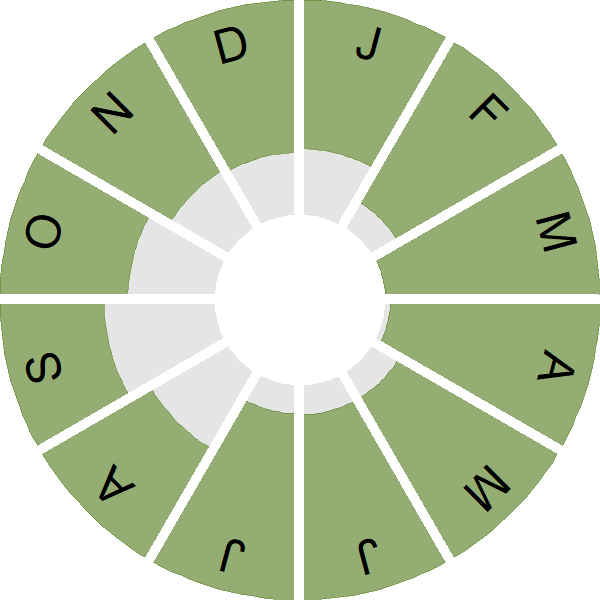Greenfinch
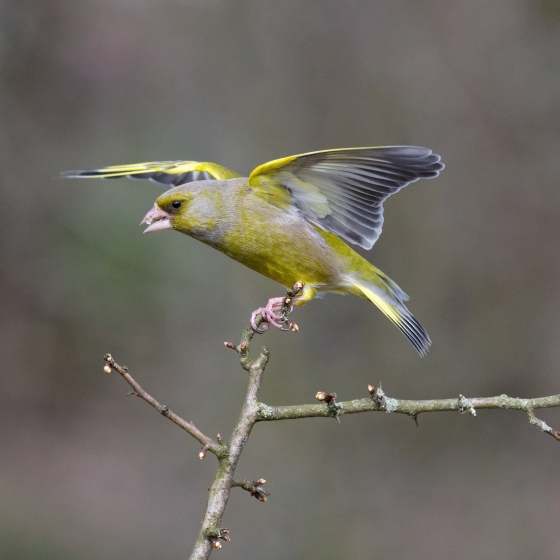
Introduction
This stocky finch can be found throughout in Britain & Ireland at all times of the year, except on the highest peaks.
The Greenfinch has a twittering song, which features a distinct drawn-out wheeze. It is a bold species and can enter into squabbles with other birds at garden feeders. It is also found in open woodland and farmland. Males have distinctive green plumage, with yellow in the wing and tail. Females and juveniles are duller.
The Greenfinch has undergone a major population decline in the UK since the mid-2000s, due to the disease Trichomonosis. It was added to the UK Red List in 2021. In the winter, Greenfinch numbers are supplemented by birds migrating from Fennoscandia.
- Our Trends Explorer gives you the latest insight into how this species' population is changing.

Key Stats
Identification
ID Videos
This section features BTO training videos headlining this species, or featuring it as a potential confusion species.
Green finches in your garden
GBW: Goldfinch and Greenfinch
#BirdSongBasics: Greenfinch and Goldfinch
Songs and Calls
Song:
Call:
Begging call:
Status and Trends
Conservation Status
Population Change
Greenfinch abundance fluctuated somewhat up to the mid 1990s, but there was little change in either survival or breeding performance during this period (Siriwardena et al. 1998b, 2000b). More recent CBC/BBS data indicate population increases widely across the UK, followed by a sudden sharp fall induced by a widespread and severe outbreak of trichomonosis disease. Although Greenfinch is currently still green listed in the UK, based on the trend at the time of the last review (Eaton et al. 2015), the current decline would raise red listing and caused it to be rated as 'Endangered' in a recent assessment of UK species which followed IUCN criteria and categories (Stanbury et al. 2017).
The BBS map of change in relative density between 1994-96 and 2007-09 indicates that increases over that period, strongest in East Anglia and in western Britain, contrasted with decreases in eastern Northern Ireland, northeastern Scotland and central southern England. The subsequent, disease-related decrease is ongoing in all parts of the UK. Numbers across Europe have been broadly stable since 1980, with early increases being followed by a decline starting in the 1990s (PECBMS: PECBMS 2020a>).
Distribution
Greenfinches are widely distributed in winter and the breeding season, perhaps showing especially strong associations with villages and towns across Britain & Ireland. Like the Goldfinch, its only significant range gaps are in the higher parts of northern Scotland. Highest densities are found on lower ground, mainly in south and southeast England, eastern Scotland and in pockets throughout Ireland.
Occupied 10-km squares in UK
or view it on Bird Atlas Mapstore.
or view it on Bird Atlas Mapstore.
European Distribution Map
Distribution Change
Since the 1981–84 Winter Atlas the range has increased by 18%, involving infilling in western Ireland and parts of Wales and northern England, and a more continuous expansion around the coastal-upland fringe in northwest Scotland.
Change in occupied 10-km squares in the UK
or view it on Bird Atlas Mapstore.
or view it on Bird Atlas Mapstore.
Seasonality
Greenfinch is recorded throughout the year on up to 30% of complete lists.
Weekly pattern of occurrence
The graph shows when the species is present in the UK, with taller bars indicating a higher likelihood of encountering the species in appropriate regions and habitats.

Habitats
Breeding season habitats
Relative frequency by habitat
The graph shows the habitats occupied in the breeding season, with the most utilised habitats shown at the top. Bars of similar size indicate the species is equally likely to be recorded in those habitats.
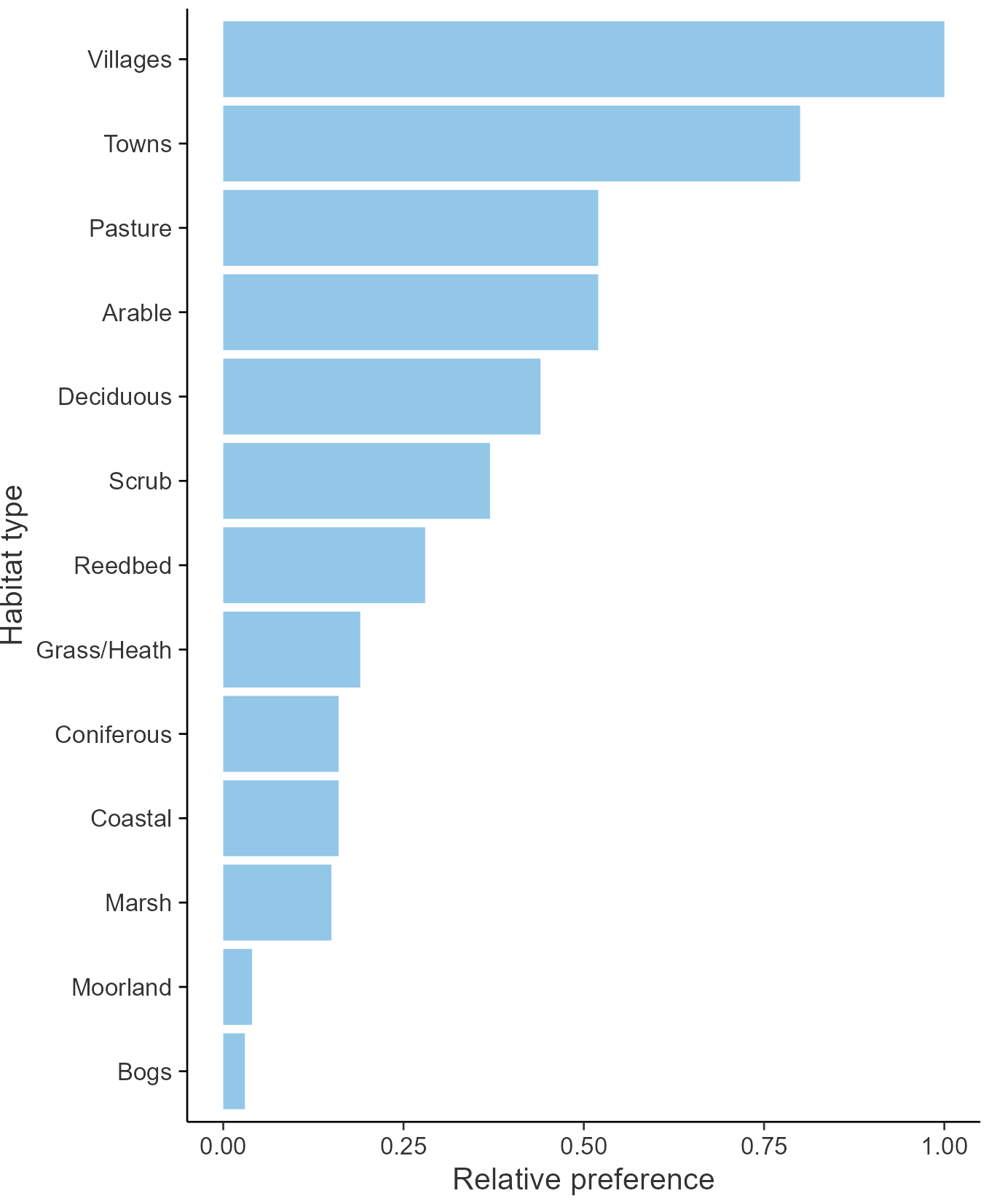
Movement
Britain & Ireland movement
Foreign locations of birds ringed or recovered in Britain & Ireland
Dots show the foreign destinations of birds ringed in Britain & Ireland, and the origins of birds ringed overseas that were subsequently recaptured, resighted or found dead in Britain & Ireland. Dot colours indicate the time of year that the species was present at the location.
- Winter (Nov-Feb)
- Spring (Mar-Apr)
- Summer (May-Jul)
- Autumn (Aug-Oct)

European movements
EuroBirdPortal uses birdwatcher's records, such as those logged in BirdTrack to map the flows of birds as they arrive and depart Europe. See maps for this species here.
The Eurasian-African Migration Atlas shows movements of individual birds ringed or recovered in Europe. See maps for this species here.
Biology
Productivity and Nesting
Nesting timing
Egg measurements
Clutch Size
Incubation
Fledging
Survival and Longevity
Survival is shown as the proportion of birds surviving from one year to the next and is derived from bird ringing data. It can also be used to estimate how long birds typically live.
View number ringed each year in the Online Ringing Report.
lifespan
Survival of adults
Survival of juveniles
Biometrics
Wing length and body weights are from live birds (source).
Wing length
Body weight
Ring Size
Classification, names and codes
Classification and Codes
- Order: Passeriformes
- Family: Fringillidae
- Scientific name: Chloris chloris
- Authority: Linnaeus, 1758
- BTO 2-letter code: GR
- BTO 5-letter code: GREFI
- Euring code number: 16490
Alternate species names
- Catalan: verdum europeu
- Czech: zvonek zelený
- Danish: Grønirisk
- Dutch: Groenling
- Estonian: rohevint
- Finnish: viherpeippo
- French: Verdier d’Europe
- Gaelic: Glaisean-daraich
- German: Grünfink
- Hungarian: zöldike
- Icelandic: Grænfinka
- Irish: Glasán Darach
- Italian: Verdone
- Latvian: zalžubite
- Lithuanian: europine žaliuke
- Norwegian: Grønnfink
- Polish: dzwoniec (zwyczajny)
- Portuguese: verdelhão / verdilhão
- Slovak: zelienka obycajná
- Slovenian: zelenec
- Spanish: Verderón común
- Swedish: grönfink
- Welsh: Llinos Werdd
- English folkname(s): Green Grosbeak/Linnet
Research
Causes of Change and Solutions
Causes of change
The rapid decline since 2005 has been caused by a severe outbreak of trichomonosis.
Further information on causes of change
The sudden sharp fall that began in 2005 was induced by a widespread and severe outbreak of trichomonosis, a disease which affects the upper digestive tract (Robinson et al. 2010b, Lawson et al. 2012b, 2018). Integrated population modelling shows that changes in survival have indeed been the strongest contributor to annual population change (Robinson et al. 2014).
Productivity data show minor decreases in clutch and brood sizes, but no change in the number of fledglings per breeding attempt. The trend towards earlier laying may be explained by recent climate change (Crick & Sparks 1999).
Information about conservation actions
The recent population downturn has been directly linked to the spread of trichomonosis (Lawson et al. 2014), and hence hygiene precautions are important in gardens where food and water is being provided, and stopping feeding should be considered if birds with the disease are observed (https://www.bto.org/our-science/projects/gbw/gardens-wildlife/garden-birds/disease/trichomonosis). The rate of decline has not yet slowed down and it is unclear whether improved garden hygiene will halt the decline.
As for Chaffinch, there have been no conservation concerns about this species until recently; hence there are no specific conservation actions relating to this species. However, assuming some birds are resistant to trichomonosis, actions and policies aimed at helping other farmland species are also likely to benefit Geenfinches and may enable numbers to recover in the future. These would include actions aimed at increasing food availability over winter (e.g. overwinter stubbles, wild bird seed or cover mixtures, set-aside, buffer strips or uncultivated margins) and those aimed at improving breeding habitat and food availability during the breeding season (e.g. management of hedgerows and reducing pesticide and herbicide use).
Publications (6)
Breeding periods of hedgerow-nesting birds in England
Author: Hanmer, H.J. & Leech, D.I.
Published: Spring 2024
Hedgerows form an important semi-natural habitat for birds and other wildlife in English farmland landscapes, in addition to providing other benefits to farming. Hedgerows are currently maintained through annual or multi-annual cutting cycles, the timing of which could have consequences for hedgerow-breeding birds.The aim of this report is to assess the impacts on nesting birds should the duration of the management period be changed, by quantifying the length of the current breeding season for 15 species of songbird likely to nest in farmland hedges. These species are Blackbird, Blackcap, Bullfinch, Chaffinch, Dunnock, Garden Warbler, Goldfinch, Greenfinch, Linnet, Long-tailed Tit, Robin, Song Thrush, Whitethroat, Wren and Yellowhammer.
05.03.24
Reports Research reports
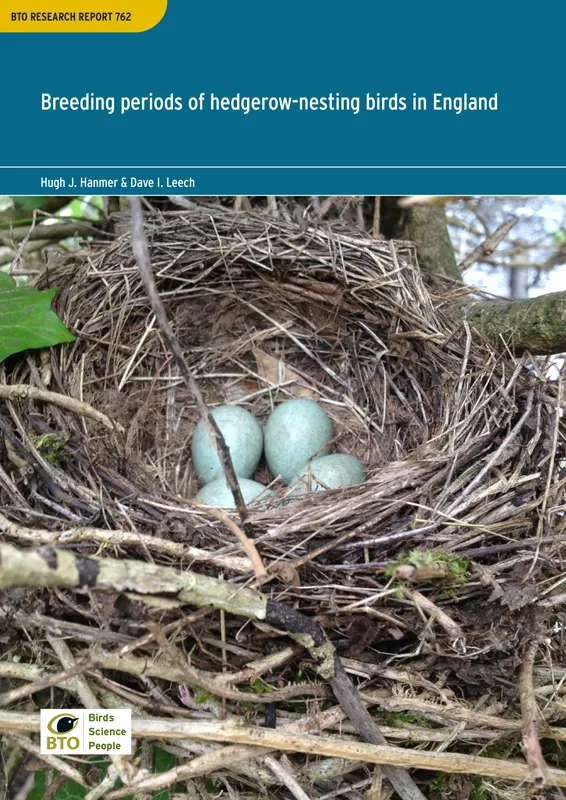
Birds of Conservation Concern Wales 4: the population status of birds in Wales
Author: Johnstone, I.G., Hughes, J., Balmer, D.E., Brenchley, A., Facey, R.J., Lindley, P.J., Noble, D.G. & Taylor, R.C.
Published: 2022
The latest review of the conservation status of birds in Wales. The report assessed all 220 bird species which regularly occur in Wales. There are now 60 species of bird on the Red List, with 91 on the Amber List and just 69 - less than a third of the total number of species - on the Green List.
06.12.22
Reports Birds of Conservation Concern

Habitat-use influences severe disease-mediated population declines in two of the most common garden bird species in Great Britain
Author: Hanmer, H.J., Cunningham, A.A., John, S.K., Magregor, S.K., Robinson, R.A., Seilern-Moy, K., Siriwardena, G.M. & Lawson, B.
Published: 2022
Infectious disease has been linked to population declines across multiple taxa, including birds, and it is important that we understand how anthropogenic factors, such as urbanisation and the provision of supplementary food at garden feeding stations, may influence its occurrence and impact.
06.09.22
Papers
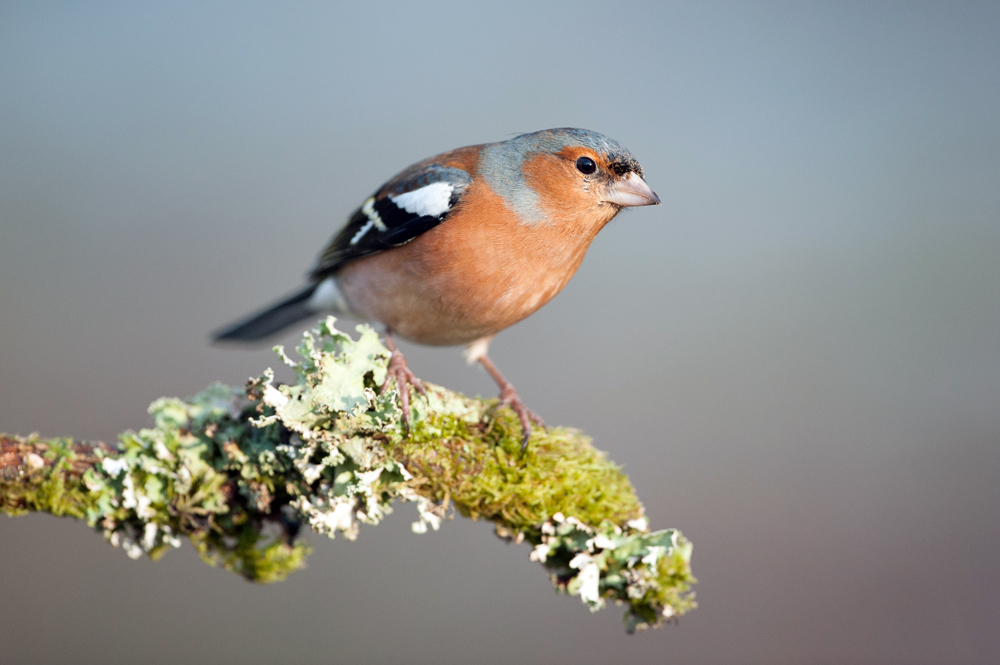
The status of our bird populations: the fifth Birds of Conservation Concern in the United Kingdom, Channel Islands and Isle of Man and second IUCN Red List assessment of extinction risk for Great Britain
Author: Stanbury, A.J., Eaton, M.A., Aebischer, N.J., Balmer, D., Brown, A.F., Douse, A., Lindley, P., McCulloch, N., Noble, D.G. & Win, I.
Published: 2021
Commonly referred to as the UK Red List for birds, this is the fifth review of the status of birds in the UK, Channel Islands and Isle of Man, published in December 2021 as Birds of Conservation Concern 5 (BOCC5). This updates the last assessment in 2015. Using standardised criteria, experts from a range of bird NGOs, including BTO, assessed 245 species with breeding, passage or wintering populations in the UK and assigned each to the Red, Amber or Green Lists of conservation concern.
01.12.21
Reports Birds of Conservation Concern
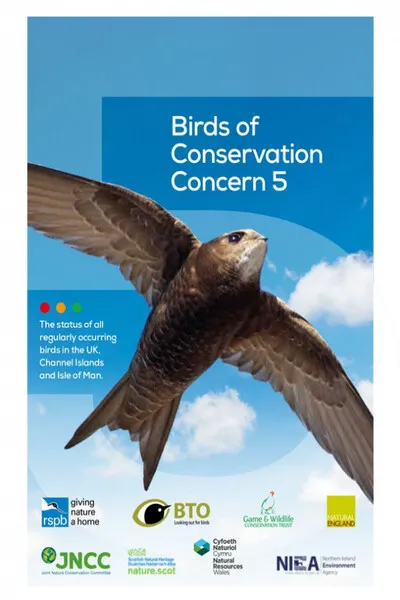
Health hazards to wild birds and risk factors associated with anthropogenic food provisioning
Author: Lawson, B., Robinson, R. A., Toms, M. P., Risely, R., MacDonald, S., Cunningham, A. A.
Published: 2018
Work on emerging infectious diseases and garden birds in the UK has been supported by citizen science projects, most notably Garden BirdWatch, Garden Wildlife Health and the Garden Bird Health Initiative – the latter now superseded by Garden Wildlife Health. Through these schemes, researchers have been able to carry out national surveillance of emerging diseases, including finch trichomonosis, Paridae pox and passerine salmonellosis. This paper, part of a special issue of Philosophical Transactions focusing on wildlife disease issues, reviews the work that has been carried out on these diseases over the past 25 years. It also takes a look at the occurrence of mycotoxin contamination of food residues in bird feeders, which also pose a risk to the health of wild birds.
12.03.18
Papers
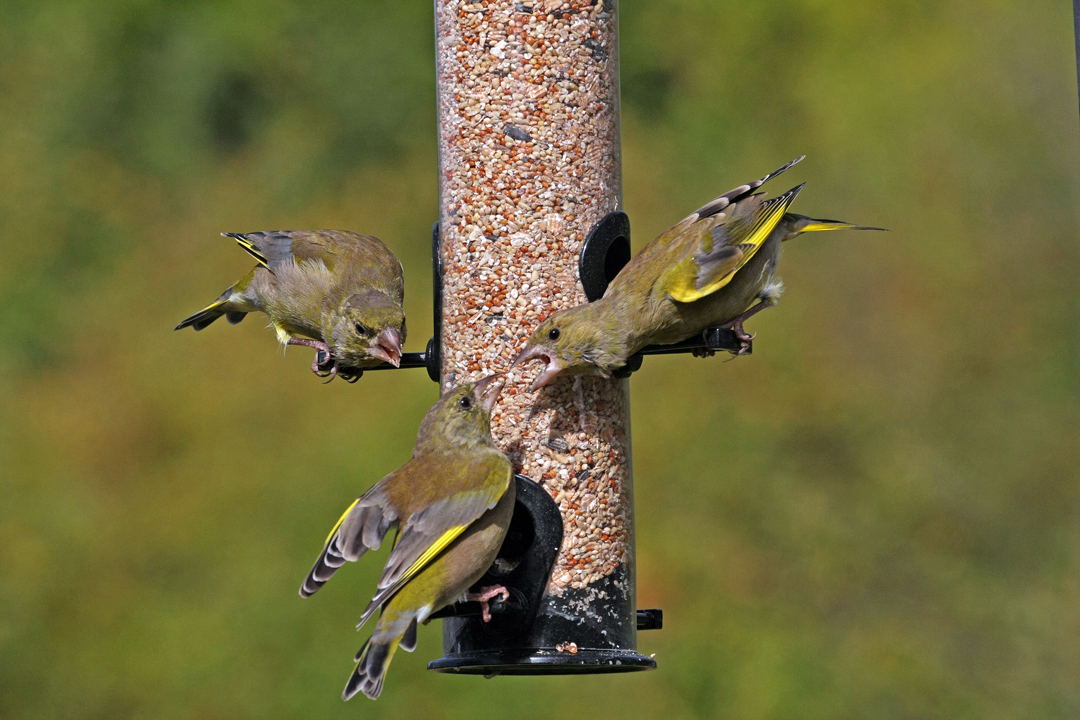
The risk of extinction for birds in Great Britain
Author: Stanbury, A., Brown, A., Eaton, M., Aebischer, N., Gillings, S., Hearn, R., Noble, D., Stroud, D. & Gregory, R.
Published: 2017
The UK has lost seven species of breeding birds in the last 200 years. Conservation efforts to prevent this from happening to other species, both in the UK and around the world, are guided by species’ priorities lists, which are often informed by data on range, population size and the degree of decline or increase in numbers. These are the sorts of data that BTO collects through its core surveys.
01.09.17
Papers
